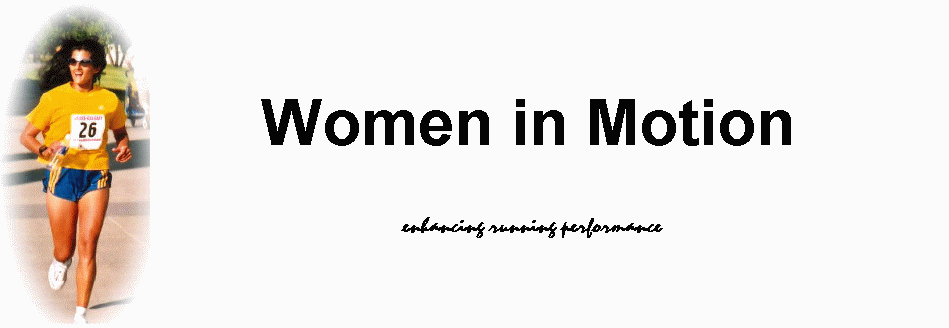| MENU |

RUNNING THEORY -
THE BASICS
Training consists of stressing a
particular physiological system followed by rest to allow
it to re-build itself stronger than before. Both
components of training are important. Often we ignore the
rest portion and focus mainly on the stressing.. To become a (complete) runner, requires
concentrating on four major training components: VO2max, VO2max This refers to the maximum volume of
oxygen per kilogram of weight that a person requires in
converting fuel to energy. As there is a direct
correlation between oxygen usage and energy consumed,
this represents the upper limit of energy available to an
exercising muscle. This upper limit is largely determined
by genetics, however training may increase it 20%. To
achieve the upper limit, you will need to run fast. Interval training is one method runners
have used to improve their V02max.
After warming up for ten minutes, you can perform
intervals ranging from 2 to 8 minute durations. Running
longer than this will mean you won't be running close to
your VO2max, thus you won't stress
your system. After running near your upper limit for
some time, your body will make adaptations and try and
increase it. Anaerobic Threshold
This is when the oxygen a muscle requires
is no longer completely provided by the air that you
breathe. Here your muscles switch from aerobic (with
oxygen) to anaerobic (without oxygen) operation. Lactic
acid begins to build up. You go into oxygen debt and if
this cannot be corrected you stop producing energy and
you stop running ! Pain is usually felt. The switch over point is normally
expressed as a percentage of your VO2max.
The goal is to increase your anaerobic percentage. It
usually varies from about 50-60% of VO2max
for untrained runners to 90% of VO2max
for elite runners. This is the speed that most long
distance racing is done at. The key is to balance
performance against lactic build up. Training this system involves running
right at this cross-over point. Most often this type of
training is referred to as a time trial or tempo run.
This type of training involves race pace running for
between 20 and 40 minutes. A warmup and a cool down is
required. Aerobic Endurance
This refers to how well we utilise the
fuel sources in our body for running. Generally, there
are two main sources of fuel. The most efficient is
glycogen (sugar) and the longest lasting is fat. We try
and teach our bodies to conserve as much glycogen as
possible while trying to become more efficient at using
fat for fuel. Running fast uses almost exclusively
glycogen as fuel while running longer than an hour must
utilise fat. Hitting the wall in a marathon usually
occurs when our glycogen stores are depleted. In extreme
cases, as our brains use glycogen for fuel, we can
collapse and/or act confused. It pays to become better at
using fat and learning how to conserve glycogen as much
as possible. This factor is trained by running for long
periods of time (+ hour). There is an optimum speed to stress the
system but the basic thing is to run for a long time. Running Efficiency
Every runner wants to be able to run with
an efficient form. You want to minimize the muscle activity
needed for movement and mimimize the oxygen needed for
forward motion. All muscle activity should be focused on
moving forward, not side to side or up and down. Keep the
height of your feet above the ground only enough to move
them forward. Keep rear kicks simple. Develop an optimum
stride length and frequency (leg turnover rate). Relax
your upper body. Use your hands and arms to help you
maintain an even stride. Avoid bouncing from side to
side. Think about your running posture and focus on
correcting one thing at a time. Practice doesn't make perfect, perfect
practice makes perfect. -Fariyal Samson, B.PE, B.Ed |

